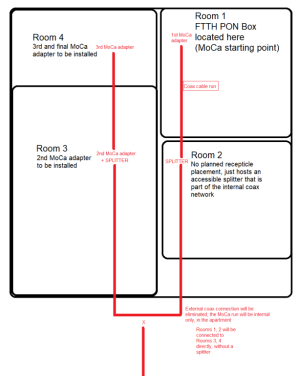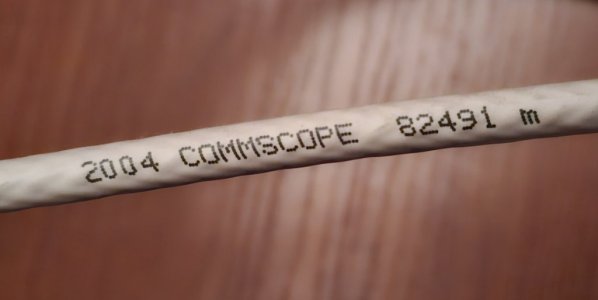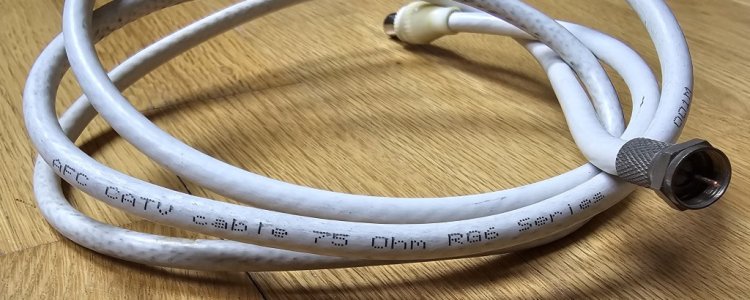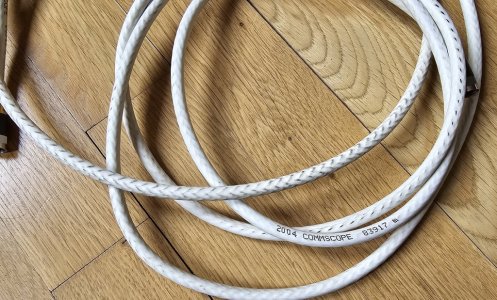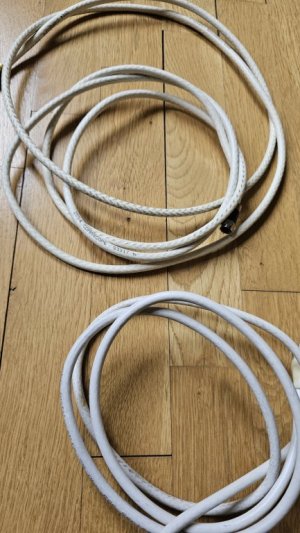Greetings!
I've been thinking about ways to get LAN connectivity throughout my apartment and so far, from what I've been able to gather, MoCa seems to be my best bet.
A bit of information:
- All walls are either brick or concrete, so digging into them to swap the coax for LAN cables is off the table. The existing coax runs have to be used.
- I am located in the EU (concerning equipment recommendation, but might be able to import what's needed from the US)
- The coax runs, end to end are rather long probably over 35-ish meters. Mentioning this, in case distance might be of concern.
- The coax cables and splitters are quite old (20+ years), not the best quality, although I used to have a DOCSIS 200Mbps internet connection for many years, prior to the current FTTH setup and signal was quite good.
In a nutshell, the idea is to opt out of the current coax TV provider and convert the apartment's entire coax network to a MoCa 2.5 internal network, then completely disconnect the external feed as it will no longer be needed (Switching to IPTV).
I have a separate symmetrical 1Gbps FTTH connection that enters the apartment and terminates to a PON modem, connected to a router and that router should be the starting point for the projected MoCa network (I've attached a rudimentary, kinda ugly, paint made diagram of the end goal).
For additional context (from the diagram), Room 1 is where main router is located and where the 1st MoCa adapter has to be, Room 2 houses a splitter where a TV used to be, got no plans to connect anything there anymore nor plug any RJ-45 devices, so no adapter needed. It's going to be just a coax connection point.
Rooms 3 and 4 are where MoCa adapters 2 and 3 should be connected, respectively. In Room 3, I plan to connect a second router for better Wifi coverage, while Room 4 will only have an IPTV box connected to the 3rd MoCa adapter.
The questions are, apart from 3x MoCa 2.5 adapters what else do I have to buy, to make the network run reliably and trouble free?
Which MoCa 2.5 adapters should I get and can I get them to work correctly, if I get them from the US?
Any other suggestions/ideas welcomed
I've been thinking about ways to get LAN connectivity throughout my apartment and so far, from what I've been able to gather, MoCa seems to be my best bet.
A bit of information:
- All walls are either brick or concrete, so digging into them to swap the coax for LAN cables is off the table. The existing coax runs have to be used.
- I am located in the EU (concerning equipment recommendation, but might be able to import what's needed from the US)
- The coax runs, end to end are rather long probably over 35-ish meters. Mentioning this, in case distance might be of concern.
- The coax cables and splitters are quite old (20+ years), not the best quality, although I used to have a DOCSIS 200Mbps internet connection for many years, prior to the current FTTH setup and signal was quite good.
In a nutshell, the idea is to opt out of the current coax TV provider and convert the apartment's entire coax network to a MoCa 2.5 internal network, then completely disconnect the external feed as it will no longer be needed (Switching to IPTV).
I have a separate symmetrical 1Gbps FTTH connection that enters the apartment and terminates to a PON modem, connected to a router and that router should be the starting point for the projected MoCa network (I've attached a rudimentary, kinda ugly, paint made diagram of the end goal).
For additional context (from the diagram), Room 1 is where main router is located and where the 1st MoCa adapter has to be, Room 2 houses a splitter where a TV used to be, got no plans to connect anything there anymore nor plug any RJ-45 devices, so no adapter needed. It's going to be just a coax connection point.
Rooms 3 and 4 are where MoCa adapters 2 and 3 should be connected, respectively. In Room 3, I plan to connect a second router for better Wifi coverage, while Room 4 will only have an IPTV box connected to the 3rd MoCa adapter.
The questions are, apart from 3x MoCa 2.5 adapters what else do I have to buy, to make the network run reliably and trouble free?
Which MoCa 2.5 adapters should I get and can I get them to work correctly, if I get them from the US?
Any other suggestions/ideas welcomed


